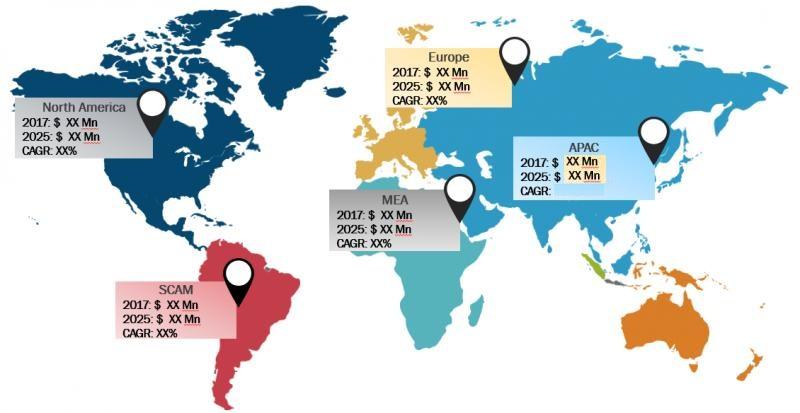According to our new research study on “Medical Tubing Market Forecast to 2028 – COVID-19 Impact and Global Analysis – by Material, Structure, Application, and End User,” the market was valued at US$ 11,992.25 million in 2021 and is projected to reach US$ 18,283.50 million by 2028; it is expected to grow at a CAGR of 6.65% from 2022 to 2028. The report highlights trends prevailing in the market, and drivers and restraints pertaining to the market growth.
Minimally invasive surgeries cause less damage to the body, resulting in less pain, shorter hospital stays, and fewer complications. These surgeries are performed using catheters, cannulas, and other equipment installed with medical tubing. For instance, in angioplasty, catheters are used to open blocked coronary arteries. According to the American College of Cardiology, ~1.2 million angioplasties are performed every year in the US. Further, the number of percutaneous coronary intervention (PCI) procedures performed in the US increased by 15.8% during 2013–2017, reaching from 550,872 to 637,650.
Laparoscopy is a minimally invasive surgical procedure that enables a surgeon to access the insides of the abdomen and pelvis without making large incisions on the skin. Per the National Health Service (NHS), in the UK, ~250,000 women undergo laparoscopic surgery for some gynecological condition every year. Additionally, the North Kansas City Hospital & Meritas Health states that ~15 million laparoscopic procedures are performed in the US annually. Further, arthroscopy is a minimally invasive surgical procedure performed on joints. It uses a small, narrow tube called an arthroscope to inspect and treat the joint. Per the Harvard Health Blog, by Harvard Medical School, every year, ~750,000 arthroscopic knee operations are performed in the US. Thus, an increase in the number of minimally invasive surgeries performed every year propels the demand for medical tubes, thereby bolstering the growth of the medical tubing market.
North America held the largest share of the medical tubing market in 2021 The region is seeing an increase in research and development in the field of imaging technology, which is driving the overall market during the forecast period.
The medical tubing market shows sturdy growth in terms of revenue. The market in the US was valued at US$ 3,702.35 million in 2021 and is projected to reach US$ 5,597.83 million by 2028; it is expected to grow at a CAGR of 6.5% during the forecast period. The US represents the most considerable supply market for medical tubing. Due to its highly diversified industrial demand, the US dominates the North American economy. Industries in this country are more flexible with their expansion and innovation strategies than other major industrial regions, such as Europe and Asia. Additionally, the growing incidence of cardiovascular diseases in the US is fueling the medical tubing market expansion. According to the Centers for Disease Control and Prevention (CDC), ~6.2 million adults in the US suffer from heart failure, and it was the cause of death of ~697,000 people in 2018. According to the data provided by the American Heart Association Inc., ~1 million new heart failure cases are registered annually in the US, and more than 8 million people are estimated to suffer from heart failure by 2030. According to the Health Research Funding Organization, ~555,000 people were diagnosed with the beginning stages of heart failure in the US in 2021. Cardiovascular diseases (CVDs) generally lead to heart failure or terminal heart disease, which bolsters the demand for medical tubing to detect and remove blockages that leads to CVDs and heart failure.
Nordson Corp, Microlumen Inc., Polyzen Inc., Accu-Tube LLC, TE Connectivity, Freudenberg Medical LLC, Spectrum Plastics Group Inc, Compagnie de Saint Gobain SA, Optinova AB, Trelleborg AB, and GlobalMed Inc. are among the leading companies operating in the global medical tubing market.
The medical tubing market is segmented on the basis of material, structure, application, end user, and geography. The medical tubing market, by material, is segmented into polyvinylchloride (PVC), polyimide/nylons, PTFE/thermoplastic elastomers, thermoplastic polyurethanes (TPUS), polyvinylchloride, polyvinylidene fluoride (PVDF), polypropylene and polyethylene, silicon, and others. Based on structure, the market is divided into single-lumen, multi-lumen, multi-layer extruded tubing, tapered or bump tubing, braided tubing, balloon tubing, corrugated tubing, heat shrink tubing, and others. The medical tubing market, by application, is segmented into bulk disposable tubing, catheters & cannula, drug delivery system, and others. Based on end user, the market is divided into hospitals and clinics, ambulatory care centers, medical labs, and others.
In terms of geography, the medical tubing market is segmented into North America (US, Canada, and Mexico), Europe (UK, Germany, France, Italy, Spain, and Rest of Europe), Asia Pacific (China, Japan, India, Australia, South Korea, and Rest of Asia Pacific), the Middle East & Africa (UAE, Saudi Arabia, Africa, and Rest of Middle East & Africa), and South & Central America (Brazil, Argentina, and Rest of South & Central America).


